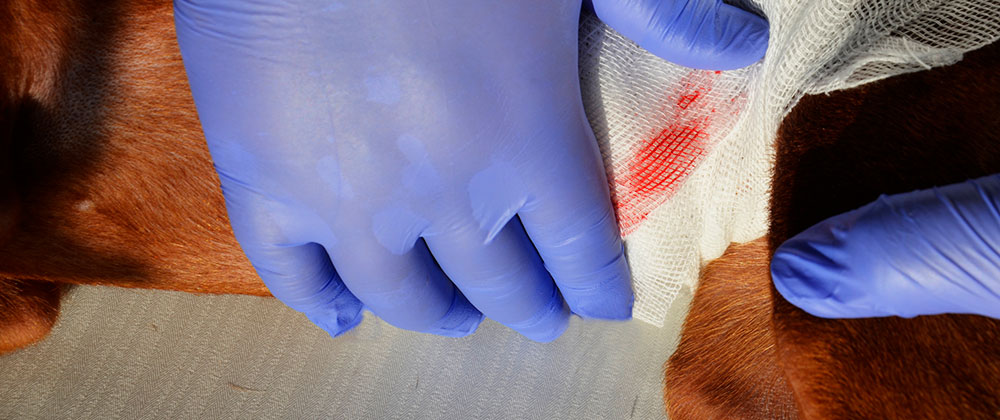For most dogs and cats, minor scrapes and scratches are usually no cause for alarm. If your pet is bleeding heavily or for longer than five minutes, however, seeking veterinary help at your Fort Lauderdale animal hospital right away is essential to protect the health and life of your beloved dog or cat. This guide will provide you with accurate answers for the question, “What do I do when my pet is bleeding?”
Bleeding Is a Sign of Injury
Although it may seem obvious, any amount of bleeding is a sign that your pet has sustained an injury. Even a small amount of bleeding could indicate a serious internal injury. Significant loss of blood can also lead to shock, which can be dangerous, damaging and even deadly for your pet.
In some cases, the cause of the bleeding will be immediately obvious. A pet that has been scratched by a thorny plant or has injured its paw while digging is unlikely to require immediate emergency attention at your Fort Lauderdale animal hospital. A larger cut or an unexplained injury, however, will usually require a visit to your veterinarian right away to determine the cause of the injury and to provide the right veterinary attention to protect your pet’s health and life.
How Blood Loss Affects Pets
Dogs and cats can be very vulnerable to shock if they lose a significant amount of blood. In some cases, loss of only two teaspoons of blood for each pound of body weight can result in shock, which can cause the internal organs to shut down. Left untreated, shock can often lead to permanent tissue and organ damage and even death for your beloved pet.
What Should I Do If My Pet Is Bleeding?
Stopping the flow of blood is usually the first step in first aid for pets. These measures can be applied on the way to the veterinary office or as soon as possible after you notice the injury:
- Elevate the wound: If it is possible to do so without causing serious pain to your pet, elevate the leg that has been injured to reduce blood flow to this area. If the injury is on the head or torso, go to step two.
- Apply direct pressure: Using a clean piece of gauze or cloth, you can apply pressure directly to the wound to stop external bleeding. This will usually stop or slow bleeding enough to allow you to travel to your Fort Lauderdale animal hospital for further treatment. If neither elevating the wound nor applying direct pressure is successful in stopping the bleeding, however, you should go to step three.
- Put pressure on the main artery: Arteries are the conduits for blood throughout the bodies of humans and animals. Finding the artery that supplies blood to the area of the wound and applying gentle but consistent pressure to this artery can often reduce the flow of blood until you can make it to the veterinarian’s office.
These steps are not a substitute for professional veterinary care. It is essential that you take your dog or cat to a Fort Lauderdale animal hospital as quickly as possible to protect your pet and to identify any additional medical issues. Your veterinarian can diagnose and treat injuries quickly and with the most effective methods to reduce the risk of further injury and permanent damage to your pet’s health.
Signs of Internal Bleeding
Even if your pet is not bleeding externally, internal bleeding can still pose a threat to the health of your dog or cat. Internal bleeding is often the result of being hit by a car, running into an obstacle or falling from a significant height. Some of the most common signs of internal bleeding are listed below:
- Pale gums that may appear almost white are a sign that your dog or cat may be experiencing blood loss because of an internal injury.
- Difficulty in breathing can often indicate an internal injury to the ribs or other areas close to the lungs. Your dog or cat may also cough or react to pain caused by breathing or coughing if an internal injury is present.
- Uncharacteristic lethargy or lack of energy can also indicate that internal bleeding may be present.
- Your dog or cat may show signs of pain when stroked or touched in the affected areas.
- Cold legs, tail or ears could be a warning sign of lack of circulation that could be caused by internal bleeding.
If your pet is showing any of these signs, you should take your dog or cat to your Fort Lauderdale animal hospital as soon as possible to protect your pet from the most serious consequences of internal bleeding.
At Family Pet Medical Center, we offer fast and effective solutions for your pet when seconds count. Call us today at 954-567-2500 to inform us about your pet’s condition and to let us know you are on your way.




